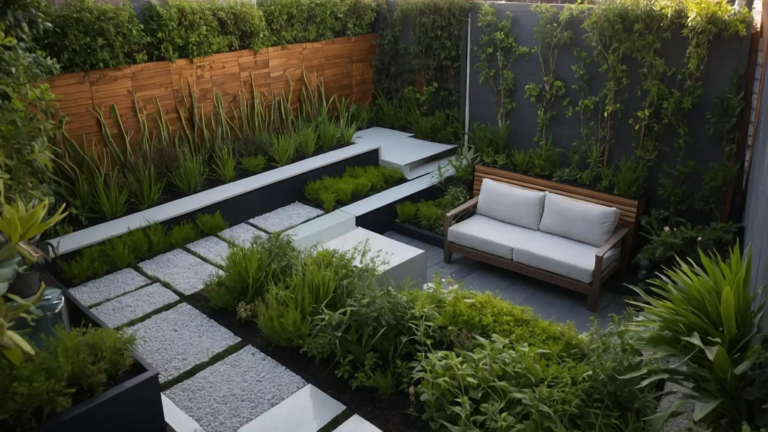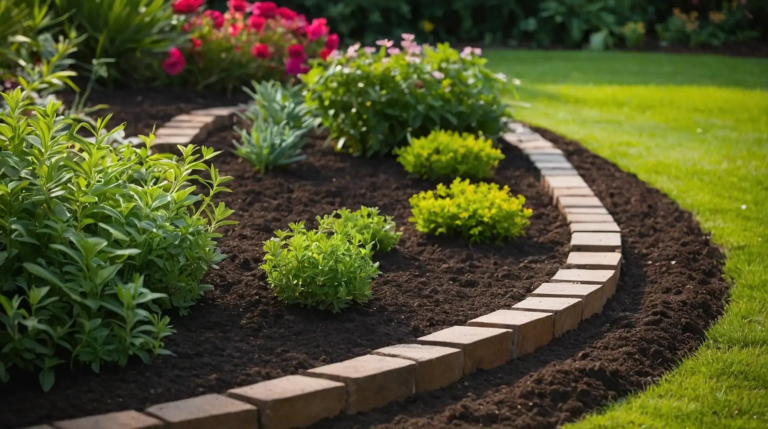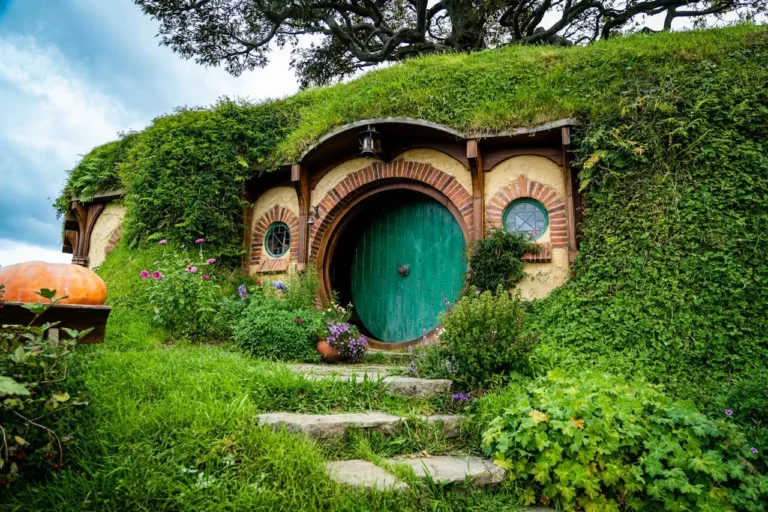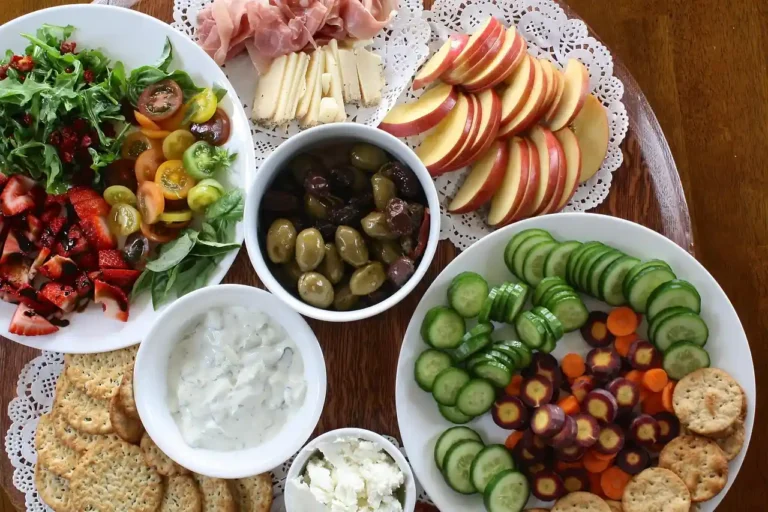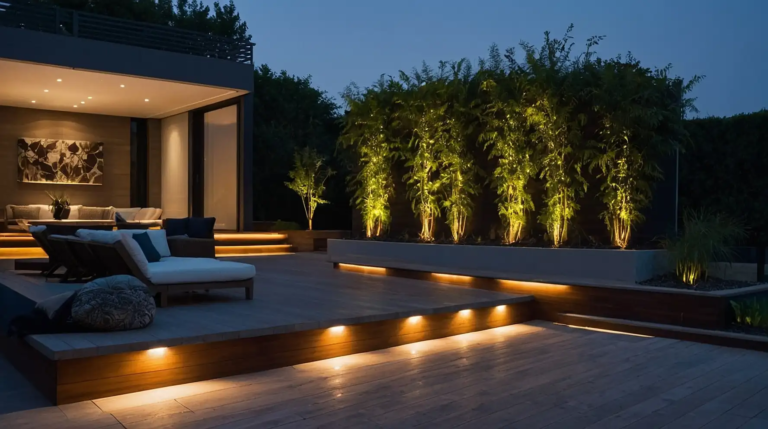27 Magical Cottage Garden Design Ideas to Create Your Own Enchanted Retreat
Cottage gardens capture a timeless charm with their informal abundance, fragrant flowers, and whimsical elements.
Unlike manicured formal gardens, these relaxed spaces welcome a bit of beautiful chaos and natural growth patterns.
The cottage garden style originated with humble countryside dwellings where families grew both ornamental and edible plants in harmonious proximity.
Today, this aesthetic offers a welcome antidote to our increasingly digital, structured lives.
Ready to create your own enchanted outdoor retreat?
These 27 cottage garden design ideas will help you transform your yard into a magical space that delights the senses and nourishes the soul throughout the seasons.
1: Create Meandering Pathways
Design curving, informal paths that invite exploration through your garden.
Use materials with old-world charm like reclaimed brick, flagstone, or gravel lined with creeping thyme or moss.
You’ll create a sense of journey and discovery as visitors wander through your garden spaces.
Allow plants to spill gently over path edges, softening hard lines and creating that signature cottage garden abundance.
Consider varying path widths—narrower sections that open to wider areas—to create rhythm and surprise as one moves through the space.
2: Embrace Mixed Planting Borders
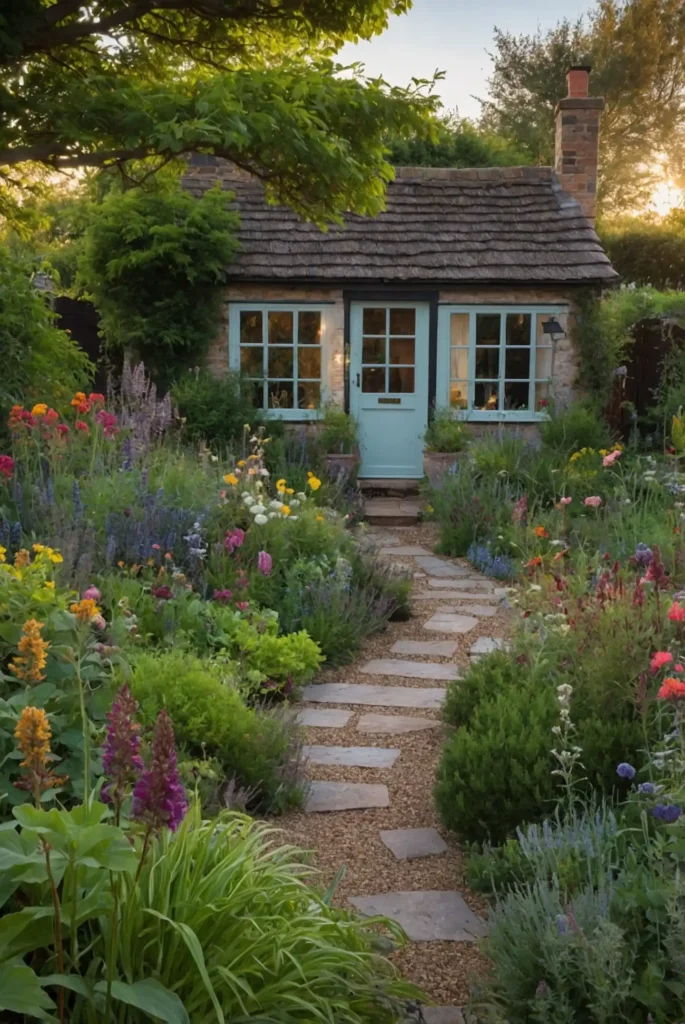
Abandon rigid, single-species beds in favor of exuberant mixed borders filled with perennials, annuals, grasses, and small shrubs.
This loose, abundant approach defines the cottage garden style.
You’ll achieve a continuous succession of blooms by combining plants with different flowering periods.
Layer your plantings with taller specimens at the back and shorter varieties in front.
Allow plants to self-seed selectively for that authentic, slightly untamed cottage garden character.
3: Include a Charming Entry Arbor
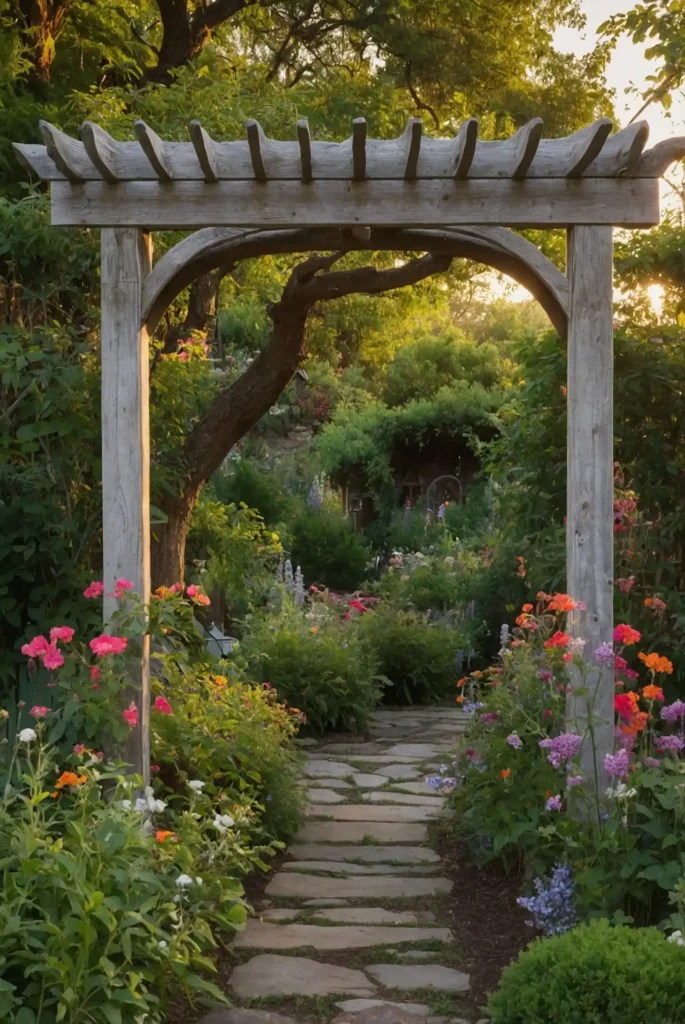
Install a wooden arbor, arch, or gate covered with climbing roses, clematis, or honeysuckle to create a welcoming garden entrance.
This vertical element adds immediate cottage garden character.
You’ll frame views into your garden while creating a clear transition from the outside world to your enchanted space.
Choose sturdy materials that will weather gracefully over time.
Add vintage hardware, a small bell, or other whimsical touches to enhance the storybook quality of your garden entrance.
4: Plant Abundantly in Layers
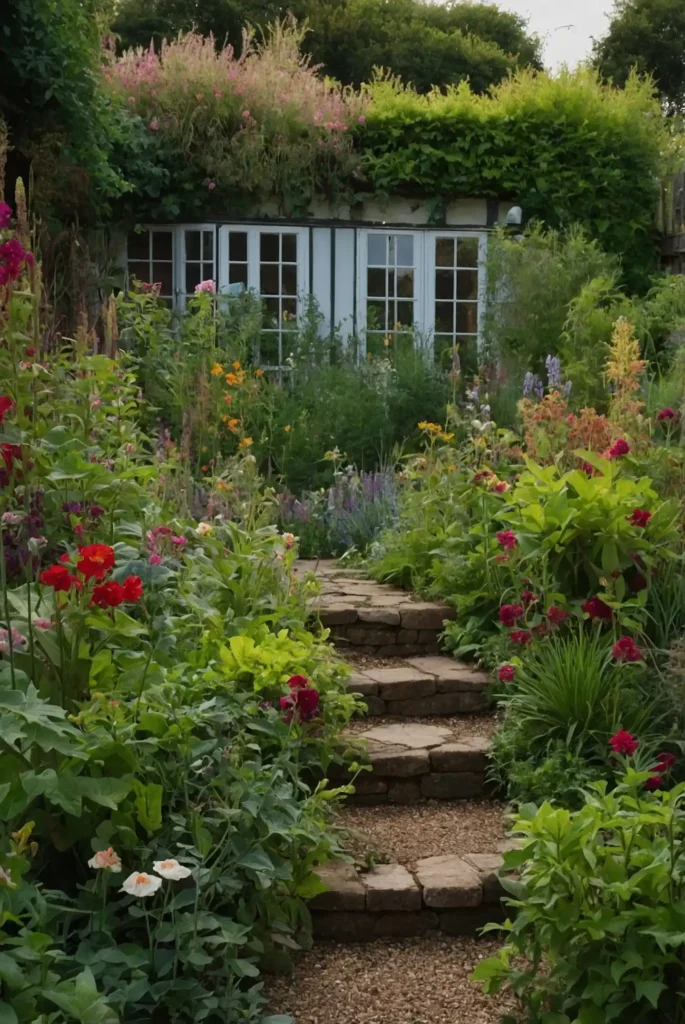
Fill your garden generously with plants in layered arrangements—ground covers underneath, mid-height perennials in the middle, and taller structural plants creating backdrop interest.
This creates the signature cottage garden fullness.
You’ll minimize visible soil and discourage weeds through this abundant planting approach.
Consider the mature size of plants while allowing for some natural mingling between species.
Aim for a balance between calculated placement and allowing plants the freedom to develop their natural forms.
5: Add a Rustic Garden Bench
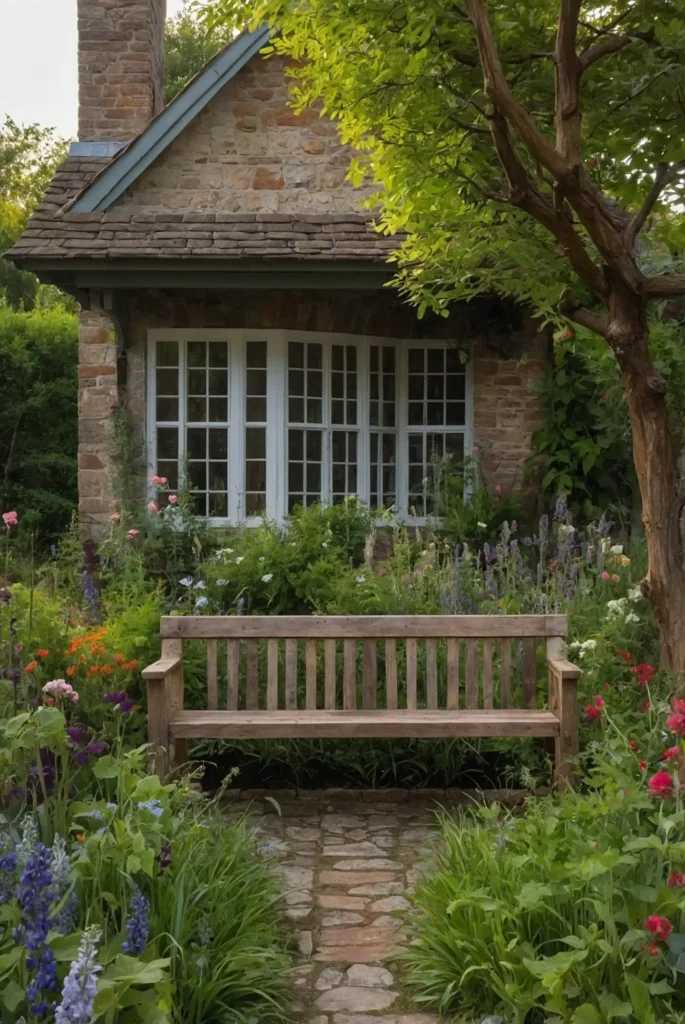
Place a weathered wooden bench at a strategic vantage point where you can appreciate your garden’s beauty.
This practical element adds instant charm and encourages lingering enjoyment of your space.
You’ll create a destination within your garden—a place to sit with morning coffee or an evening glass of wine.
Consider positioning near fragrant plants like lavender or roses to enhance the sensory experience.
Allow climbing plants to partially embrace your bench, integrating it more fully into the garden composition.
6: Incorporate Kitchen Herbs
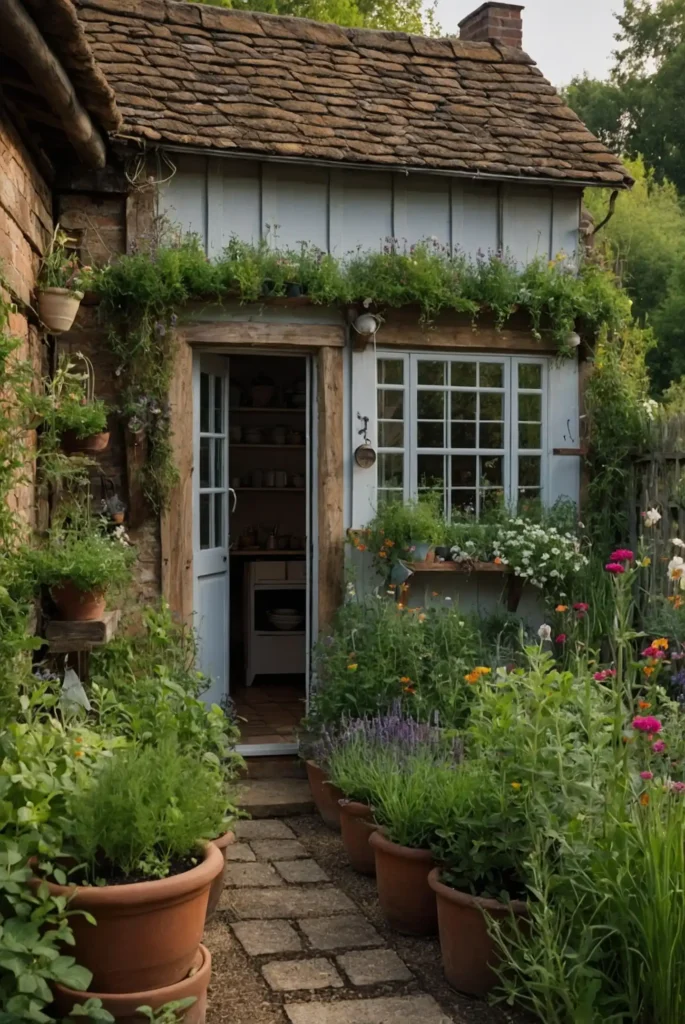
Intermingle culinary herbs like rosemary, thyme, sage, and lavender among your ornamental plants.
These fragrant, practical additions honor the working origins of traditional cottage gardens.
You’ll enjoy both the aromatic qualities and the convenient harvest for cooking.
Many herbs offer beautiful flowers that attract beneficial pollinators to your garden.
Group herbs with similar water needs together to simplify maintenance while maintaining the informal cottage aesthetic.
7: Add Vertical Interest with Hollyhocks
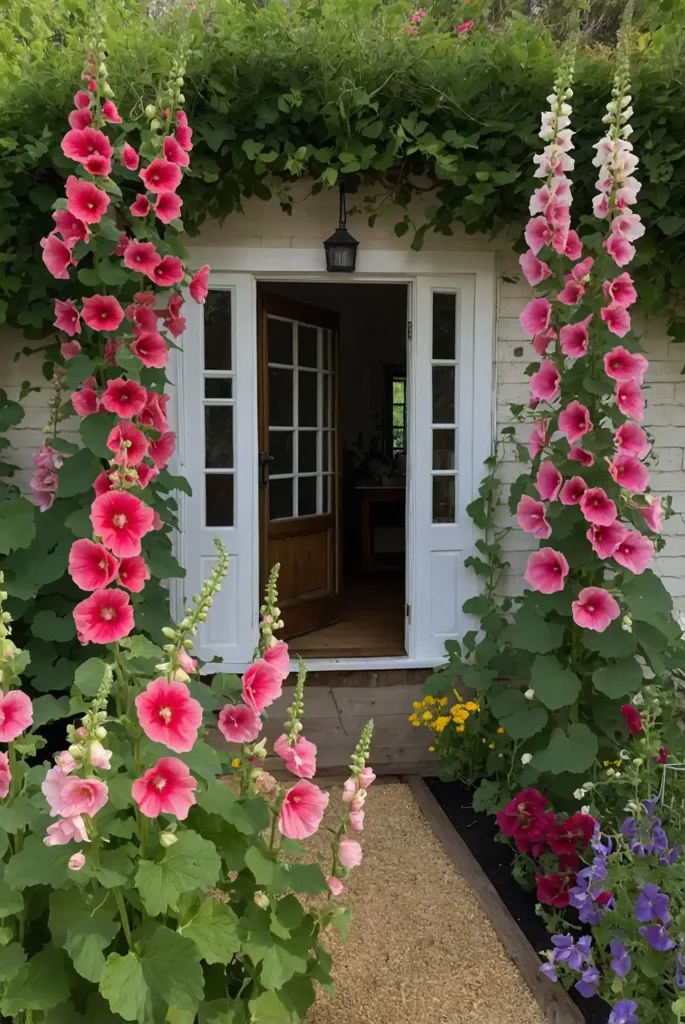
Plant statuesque hollyhocks along fences, walls, or the back of borders to create dramatic vertical elements in your cottage garden.
These traditional favorites bring instant period charm.
You’ll enjoy their towering flower spikes from early to late summer, available in colors from white to pink, yellow, and nearly black.
Allow hollyhocks to self-seed for authentic cottage garden spontaneity.
Combine with lower-growing plants at their base to hide the less attractive lower leaves that may develop powdery mildew late in the season.
8: Include a Quaint Birdbath

Place a simple birdbath in a visible location to attract feathered visitors while adding a decorative focal point.
Choose stone, ceramic, or aged metal versions for authentic cottage charm.
You’ll create habitat value while adding the delightful element of bird activity to your garden.
Position near shrubs or small trees that provide safe perches for birds approaching the water.
Keep water fresh and clean with regular rinsing, especially during hot weather when birds need reliable water sources.
9: Plant Heirloom Varieties
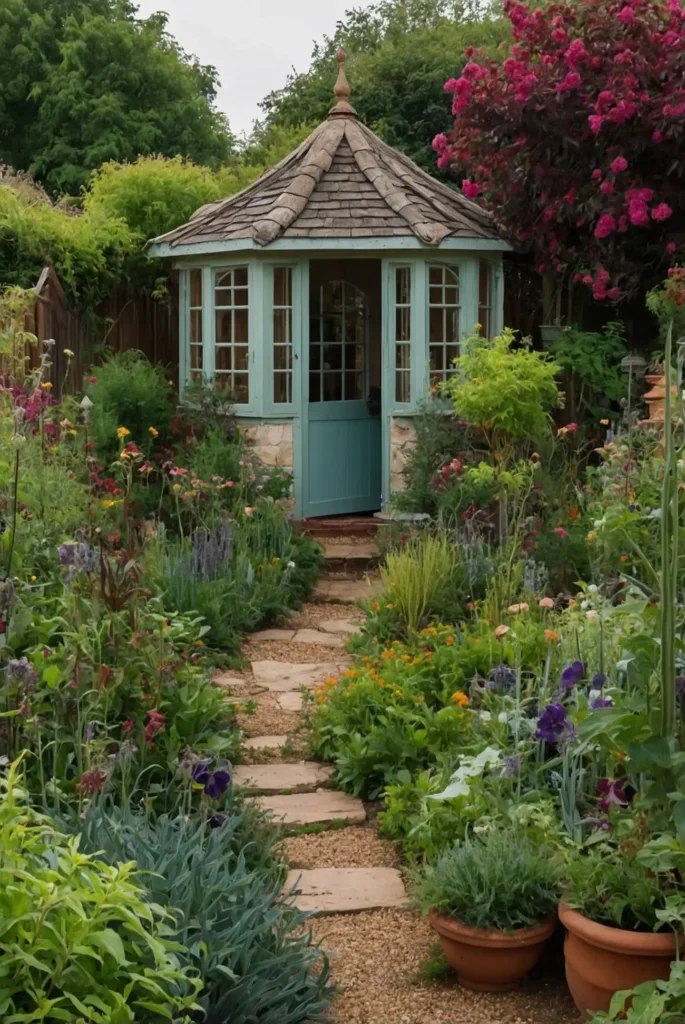
Seek out heritage and heirloom plant varieties that would have been found in traditional cottage gardens.
These often offer exceptional fragrance and distinctive forms not found in modern hybrids.
You’ll connect with gardening history while often discovering more robust, disease-resistant plants adapted to local conditions.
Look for old-fashioned roses, foxgloves, peonies, and bee balm varieties.
Collect and save seeds from these heirloom plants to preserve their genetic heritage and expand your garden economically.
10: Create Intimate Garden Rooms
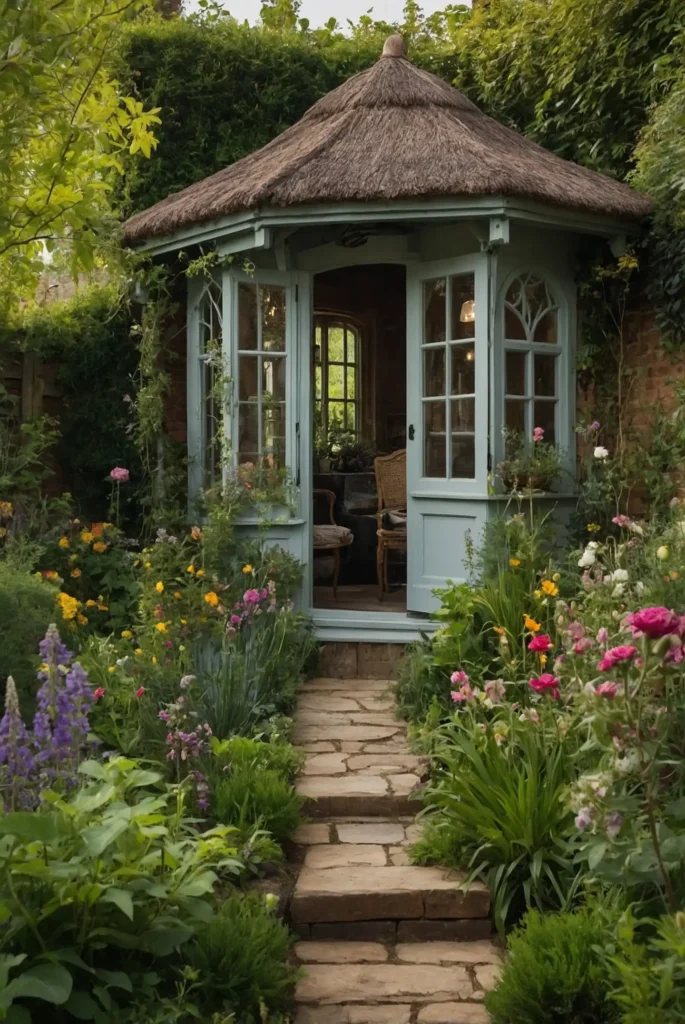
Divide your space into smaller “garden rooms” using informal hedges, trellises, or strategically placed shrubs.
This creates a sense of discovery as visitors move through your garden.
You’ll establish different moods and microclimates within your overall garden design.
Consider creating specialized areas like a cutting garden, herb garden, or relaxation nook.
Ensure smooth transitions between these spaces through consistent elements like path materials or repeated signature plants.
11: Mix Ornamental with Edibles
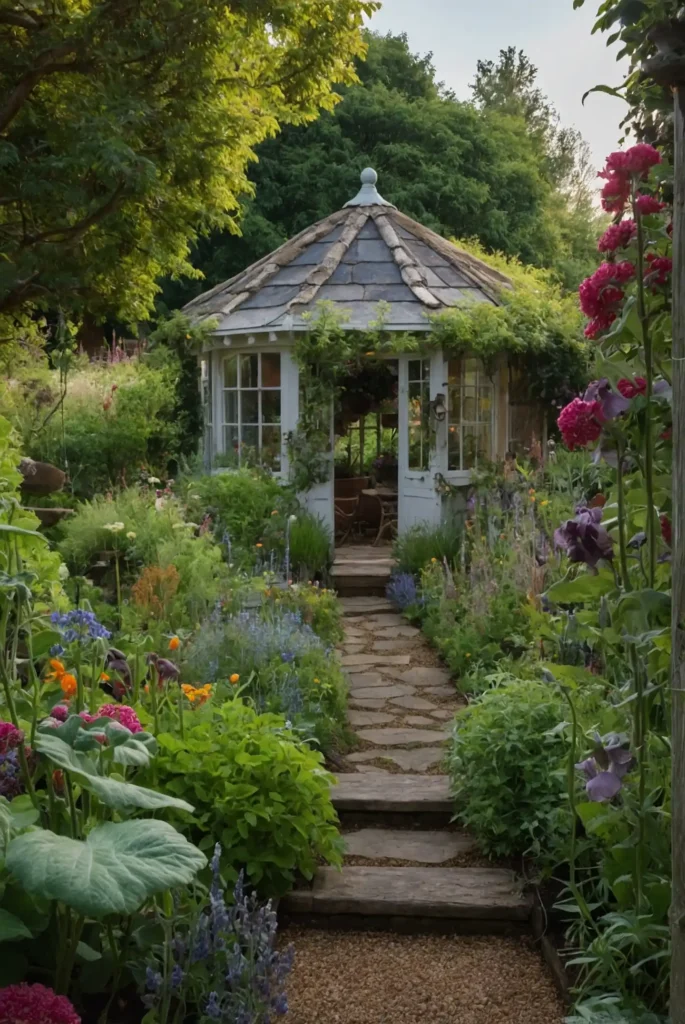
Integrate vegetables and fruits among your ornamental plantings in true cottage garden tradition.
Purple cabbage, rainbow chard, and climbing beans offer both beauty and utility.
You’ll maximize your garden’s productivity while maintaining its aesthetic appeal.
Consider decorative structures like obelisks or teepees for climbing edibles like peas and beans.
Include edible flowers such as nasturtiums, pansies, and borage that enhance both your garden and your plate.
12: Add Climbing Roses
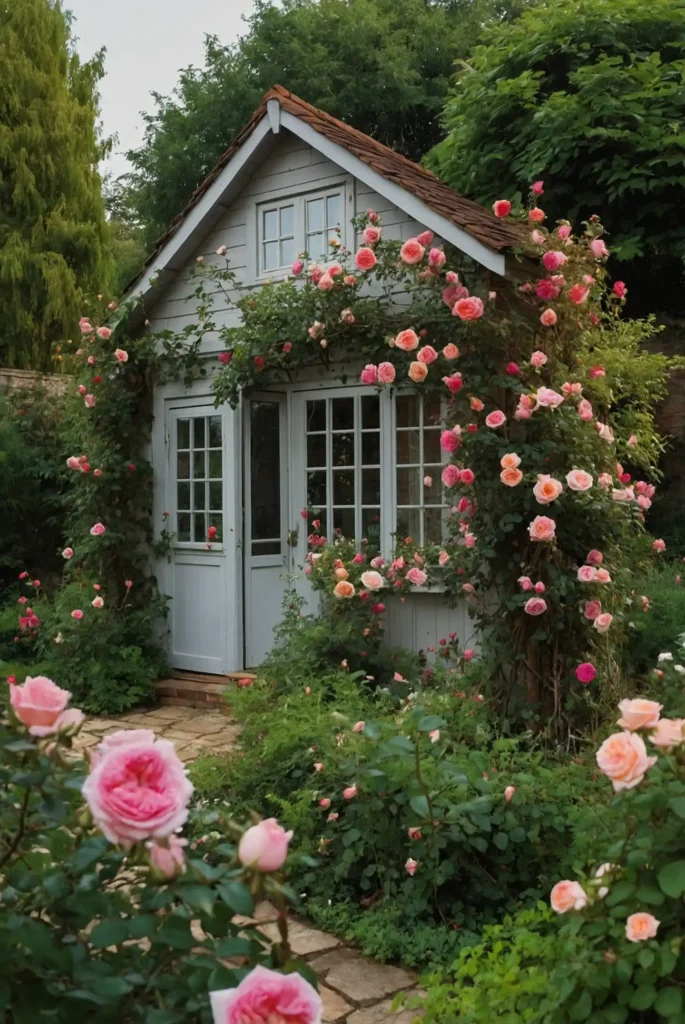
Train climbing or rambling roses over arches, fences, or along cottage walls for romantic, vertical impact.
These iconic cottage garden plants create spectacular seasonal displays.
You’ll enjoy waves of fragrant blooms and charming rosehip displays in fall and winter.
Choose varieties like ‘New Dawn,’ ‘Zéphirine Drouhin,’ or ‘Albertine’ that combine beauty with relative disease resistance.
Provide sturdy support structures and regular pruning to keep these vigorous plants showcasing their best features.
13: Include a Picket Fence
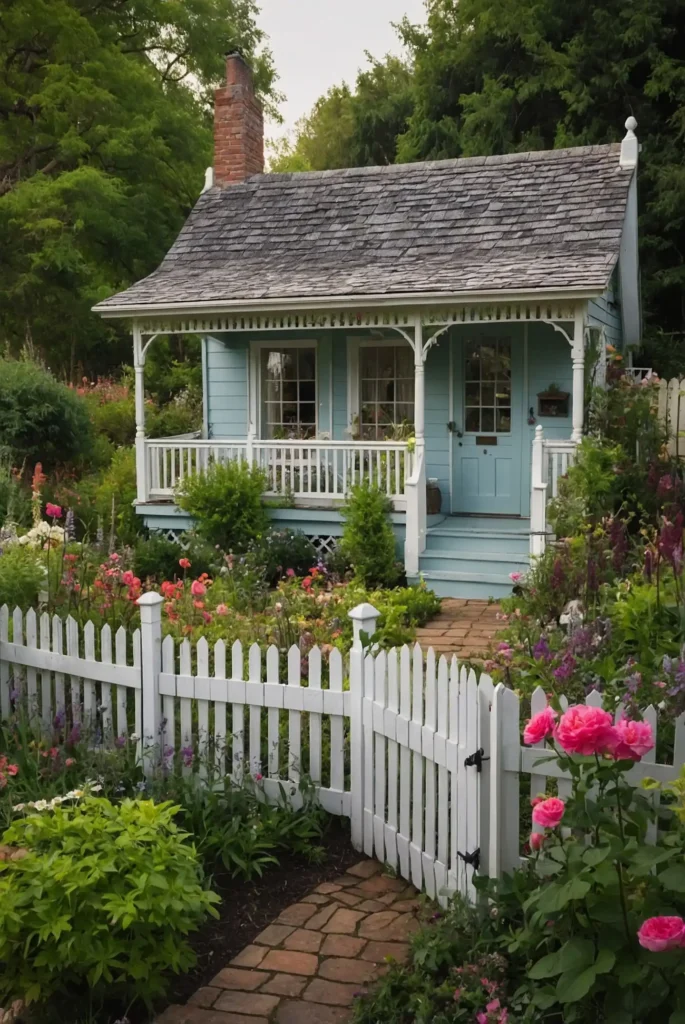
Install a white picket fence or rustic wooden enclosure to define your cottage garden boundaries.
This traditional element instantly communicates the cottage garden aesthetic.
You’ll create a sense of enclosure while providing structural support for climbing plants.
Consider leaving the wood unpainted for a more rustic look or choose classic white for a crisp contrast against abundant plantings.
Allow plants to softly spill over and through fence pickets for that characteristic cottage garden blurring of boundaries.
14: Plant Flowering Fruit Trees
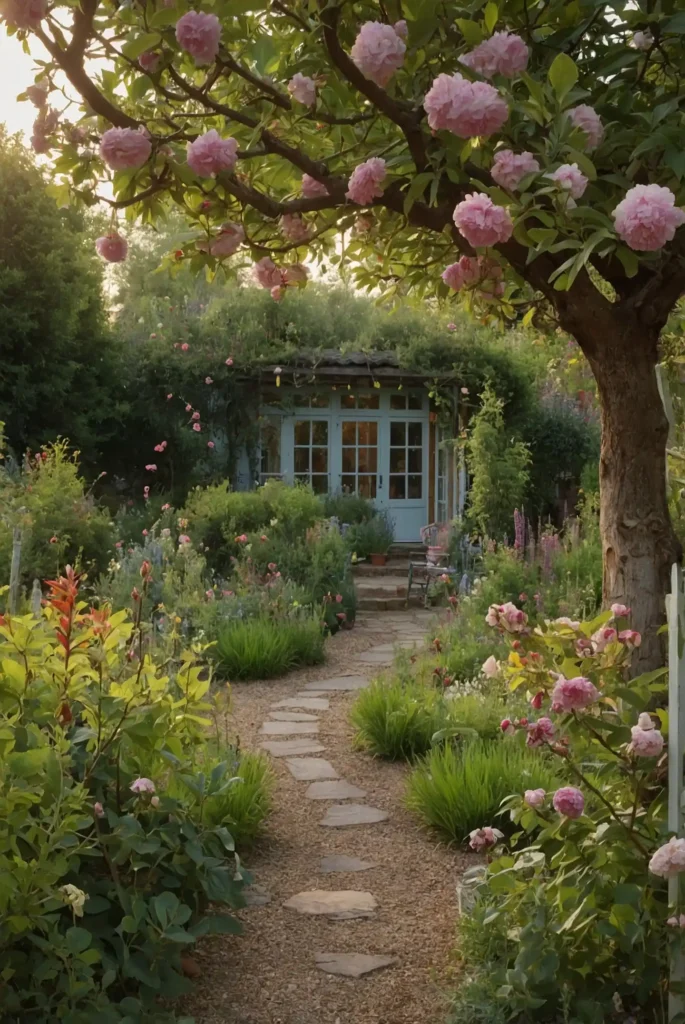
Incorporate small ornamental or dwarf fruit trees like crabapples, cherries, or plums to provide structure, spring blossoms, and fall fruit.
These multi-season performers anchor cottage garden designs.
You’ll create dappled shade for understory plants while enjoying spectacular spring flowering displays.
Choose varieties suited to your climate that won’t outgrow their allotted space.
Underplant with spring bulbs and shade-tolerant perennials to maximize every inch of garden space.
15: Add Whimsical Garden Art
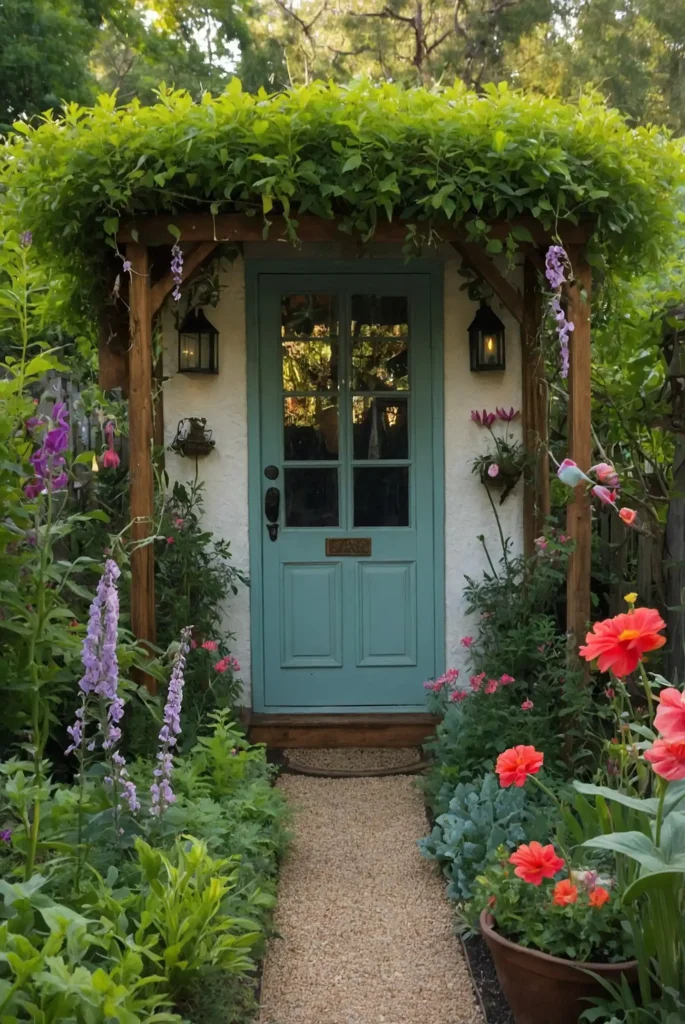
Include handcrafted or vintage garden ornaments that reflect your personality and enhance the magical quality of your cottage garden.
Weathered birdhouses, stone animals, or artistic plant supports add charm.
You’ll create moments of surprise and delight as visitors discover these personal touches throughout your garden.
Choose items with patina and character rather than mass-produced decorations.
Position these elements where they’ll be gradually revealed rather than immediately visible for a more authentic, evolved garden feeling.
16: Create a Cutting Garden Section
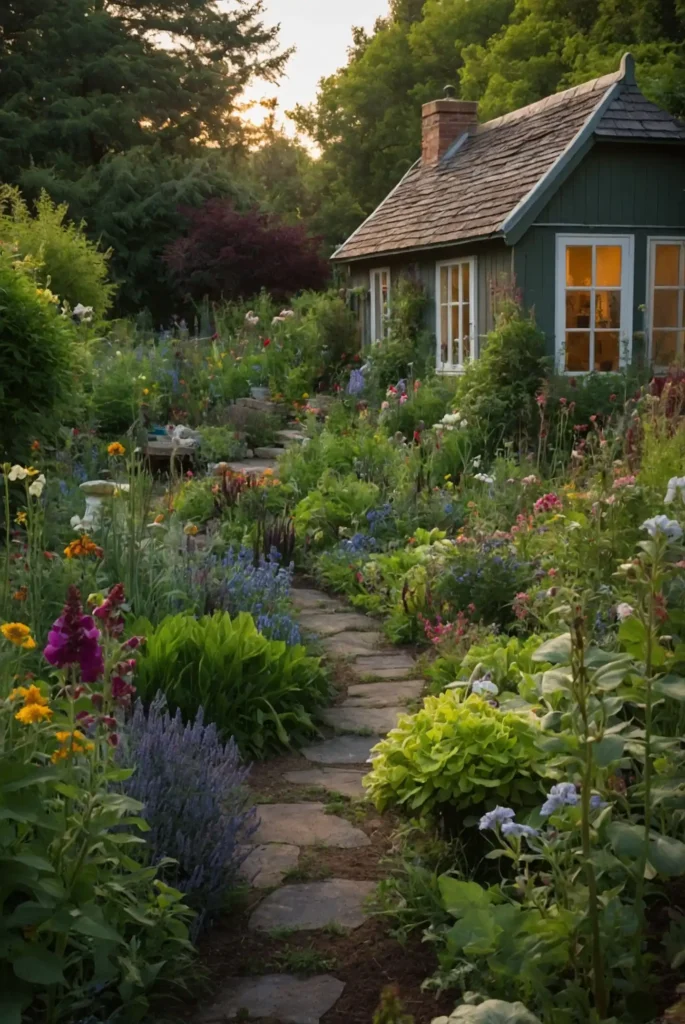
Designate an area specifically for flowers grown for indoor arrangements.
Include reliable cutting varieties like zinnias, cosmos, dahlias, and sunflowers in this productive garden section.
You’ll enjoy fresh bouquets throughout the growing season without depleting your display beds.
Plant in rows for easy access while maintaining a relaxed, cottage-appropriate aesthetic.
Include foliage plants like bells of Ireland, ornamental grasses, and silver-leaved specimens that enhance arrangements with contrasting textures.
17: Incorporate a Water Feature
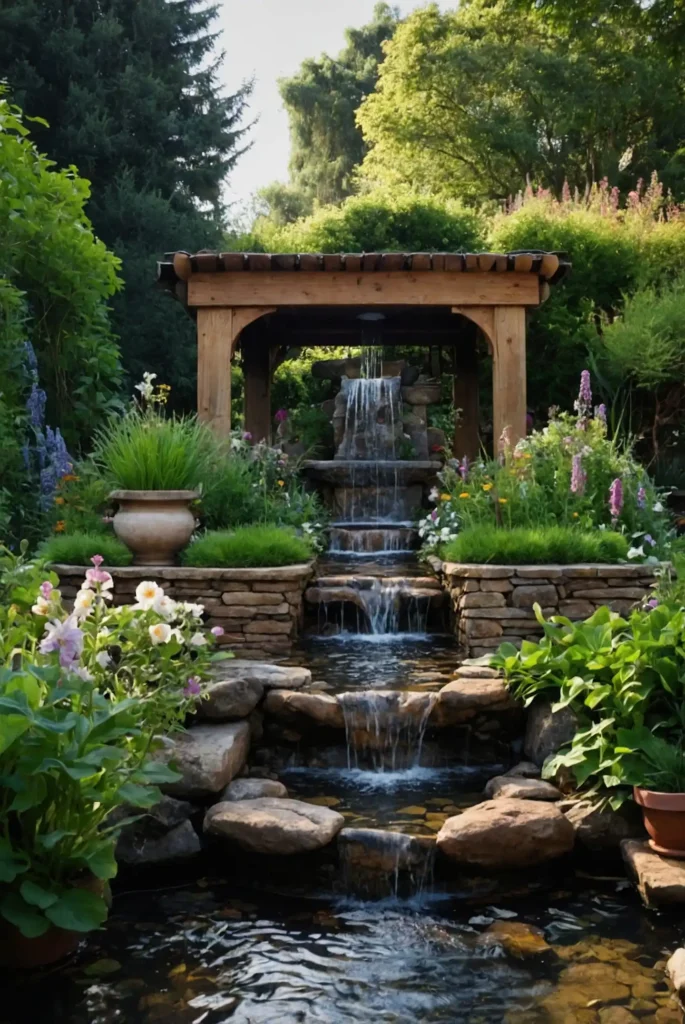
Add a small pond, simple fountain, or recirculating stream to bring the magical element of water into your cottage garden.
Even a small water source creates a focal point and attracts wildlife.
You’ll enjoy the reflective qualities and gentle sounds that water features contribute to the garden atmosphere.
Choose natural-looking designs rather than formal or contemporary styles.
Surround with moisture-loving plants like astilbe, Japanese iris, and meadowsweet for a seamless integration into your garden design.
18: Plant a Diverse Bulb Collection
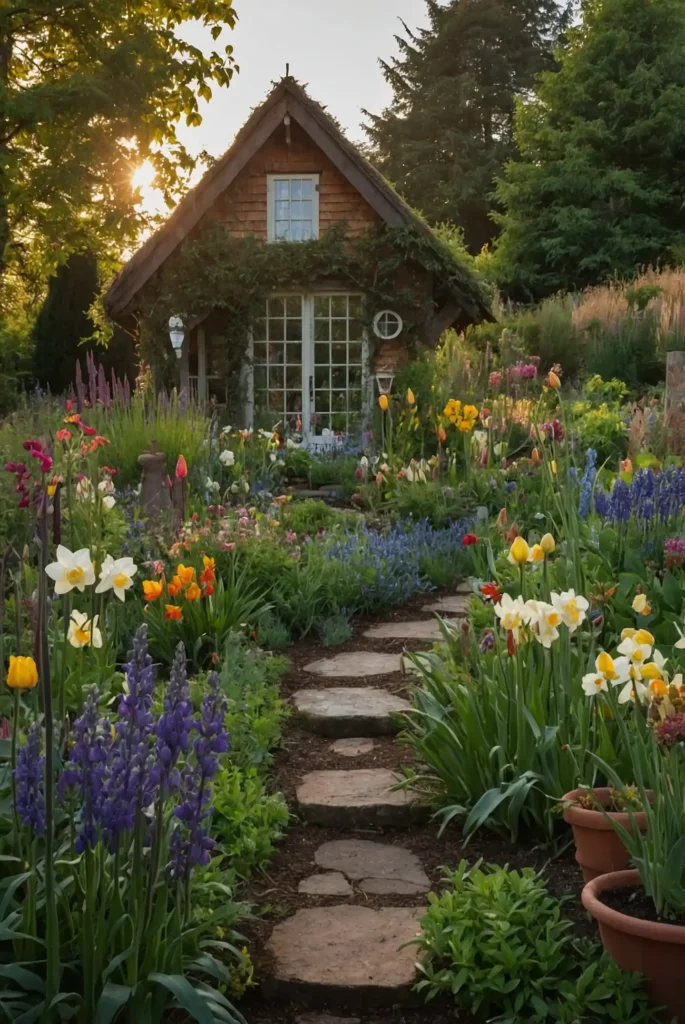
Incorporate layers of spring and summer bulbs throughout your garden for early color and succession of blooms.
Snowdrops, daffodils, tulips, and alliums create seasonal waves of interest.
You’ll extend your garden’s display season starting in late winter with the earliest bulbs.
Plant in generous, natural-looking drifts rather than formal or regimented arrangements.
Allow bulb foliage to yellow naturally after flowering to replenish the bulbs for next season’s display.
19: Add a Rustic Obelisk or Trellis
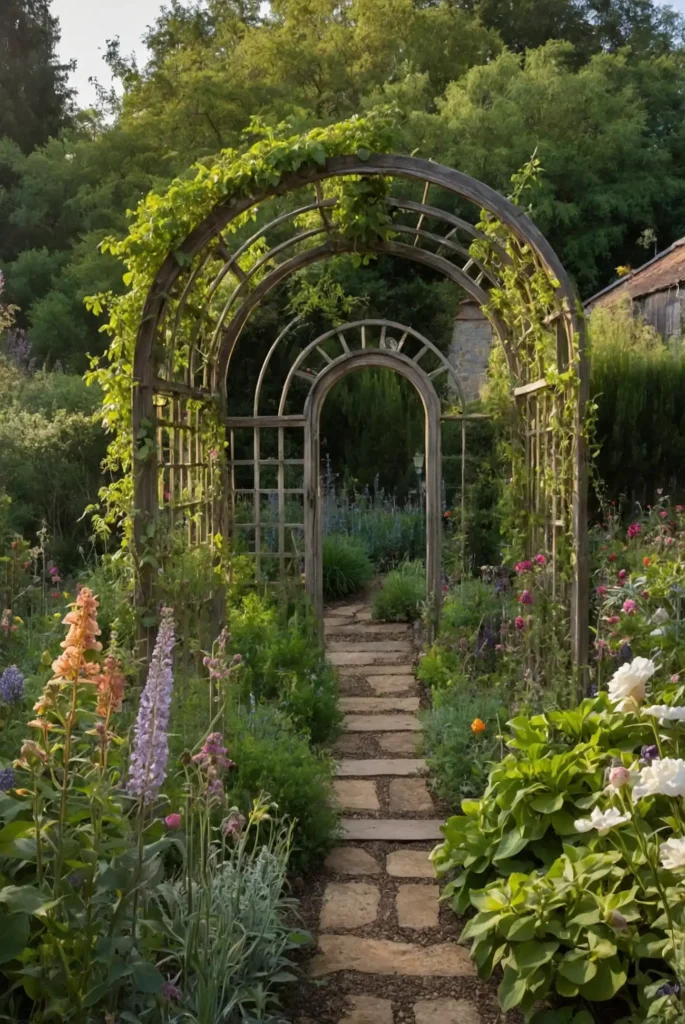
Place handcrafted wooden or metal supports within your borders to add height and provide climbing surfaces for vines and flowering plants.
These structural elements prevent floppy plants from overwhelming neighbors.
You’ll create vertical interest while keeping vigorous climbers like sweet peas, morning glories, or clematis contained.
Choose or design supports with cottage-appropriate rustic character.
Position these structural elements where they’ll make a pleasing silhouette even in winter when plants have died back.
20: Create Tapestry Color Combinations
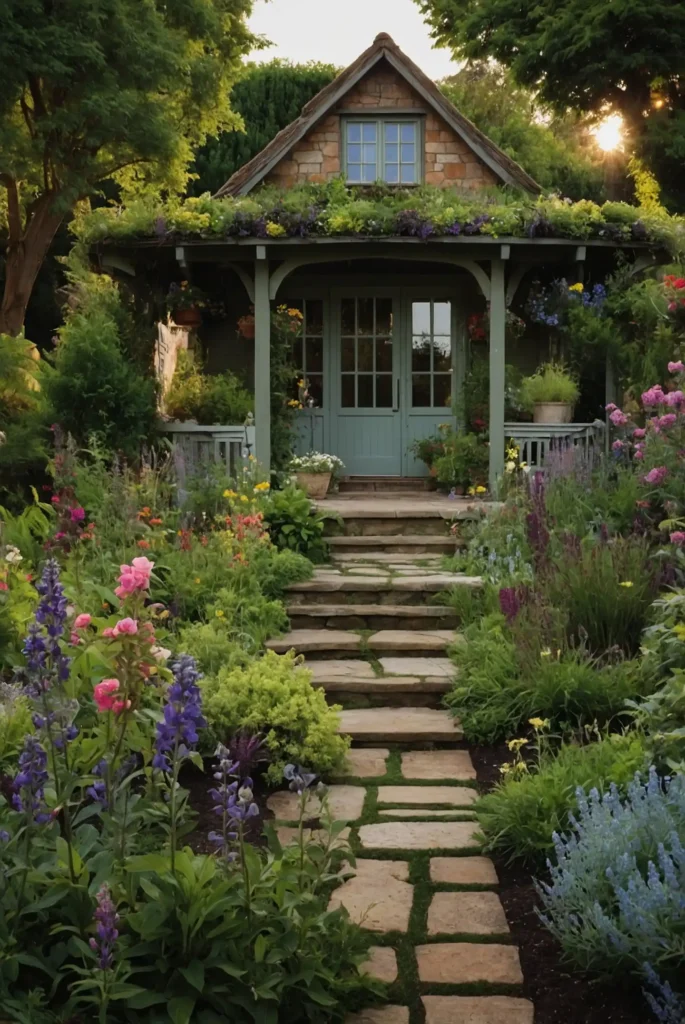
Design plant groupings with complementary or harmonious color schemes that create cohesive visual impact.
Consider classic cottage combinations like purple and yellow or pink and silver.
You’ll develop more sophisticated color relationships than random planting allows.
Incorporate plants with colored foliage that provides consistent structure when flowers fade.
Consider how colors will transition through seasons as different plants come into bloom.
21: Add a Quaint Garden Shed
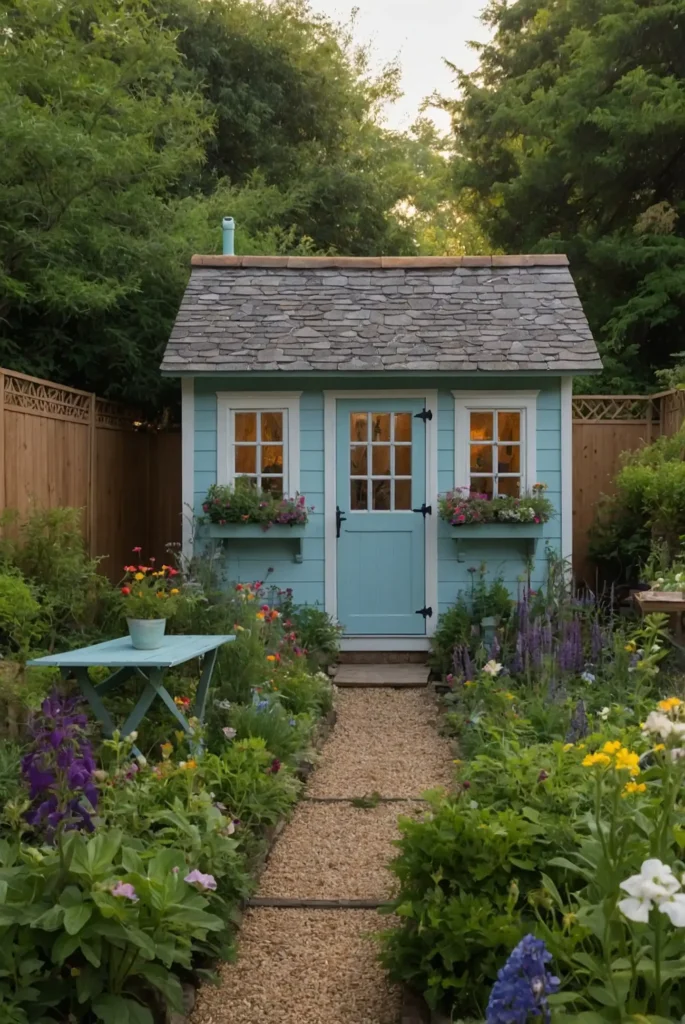
Transform a small outbuilding into a charming focal point with window boxes, climbing plants, and decorative details.
Even a simple shed becomes magical with cottage garden embellishments.
You’ll create practical storage while establishing a picturesque backdrop for your plantings.
Paint in subtle heritage colors or allow wood to weather naturally for an authentic look.
Surround with especially abundant plantings to integrate the structure into your garden composition.
22: Plant for Pollinators
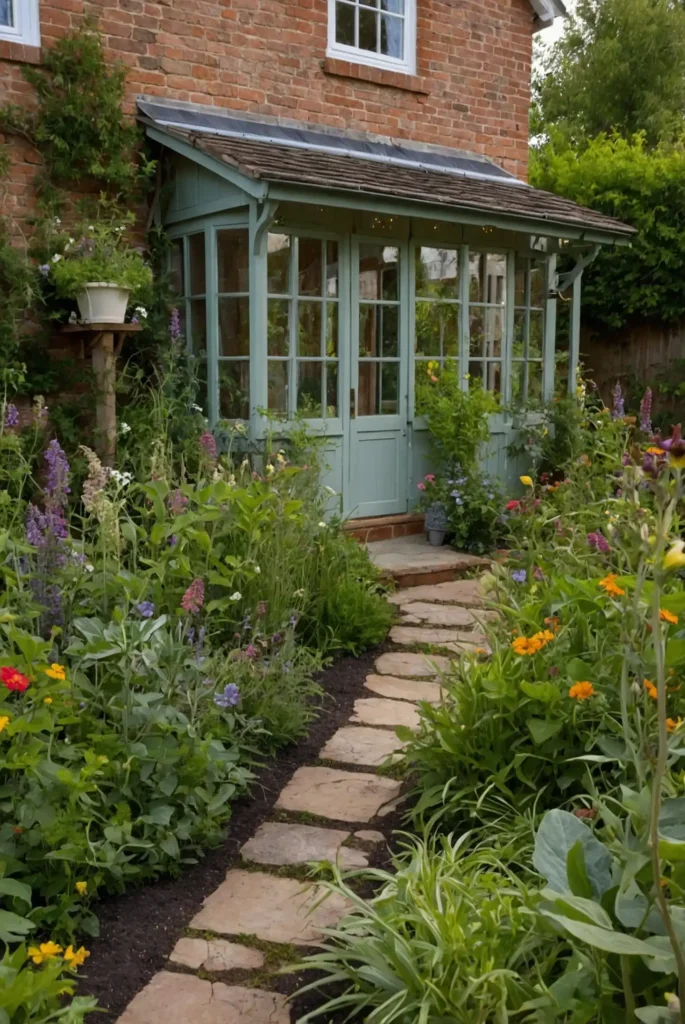
Include plants that specifically attract bees, butterflies, and hummingbirds to animate your garden with beneficial wildlife.
Traditional cottage garden flowers like foxglove, bee balm, and lavender excel at drawing pollinators.
You’ll improve garden productivity while contributing to essential habitat for declining pollinator populations.
Include plants with different bloom times to provide consistent nectar sources.
Consider adding a small bee house, butterfly pudding station, or hummingbird feeder to further support these garden helpers.
23: Incorporate Scented Plants
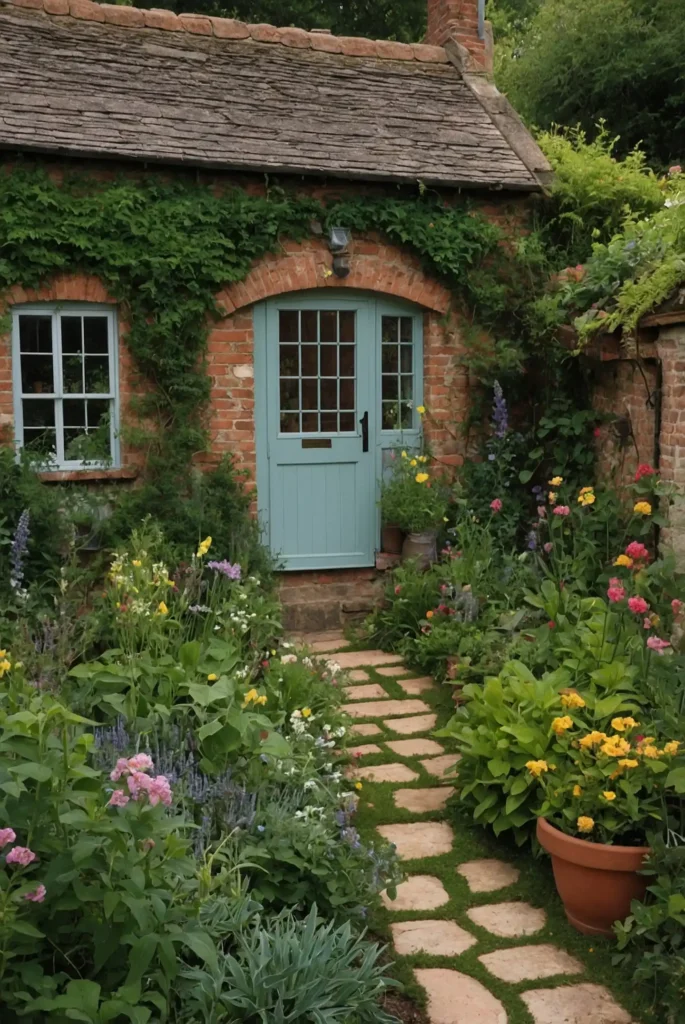
Strategically place highly fragrant plants near paths, seating areas, and garden entrances where their scents can be fully appreciated.
Roses, lilacs, sweet peas, and herbs offer delightful fragrances.
You’ll engage multiple senses in your garden experience through this intentional approach to scent.
Consider plants with different aromatic qualities—from spicy dianthus to sweet honeysuckle.
Include evening-scented plants like nicotiana and night-scented stock near patios where you’ll enjoy them after sunset.
24: Add Garden Stepping Stones
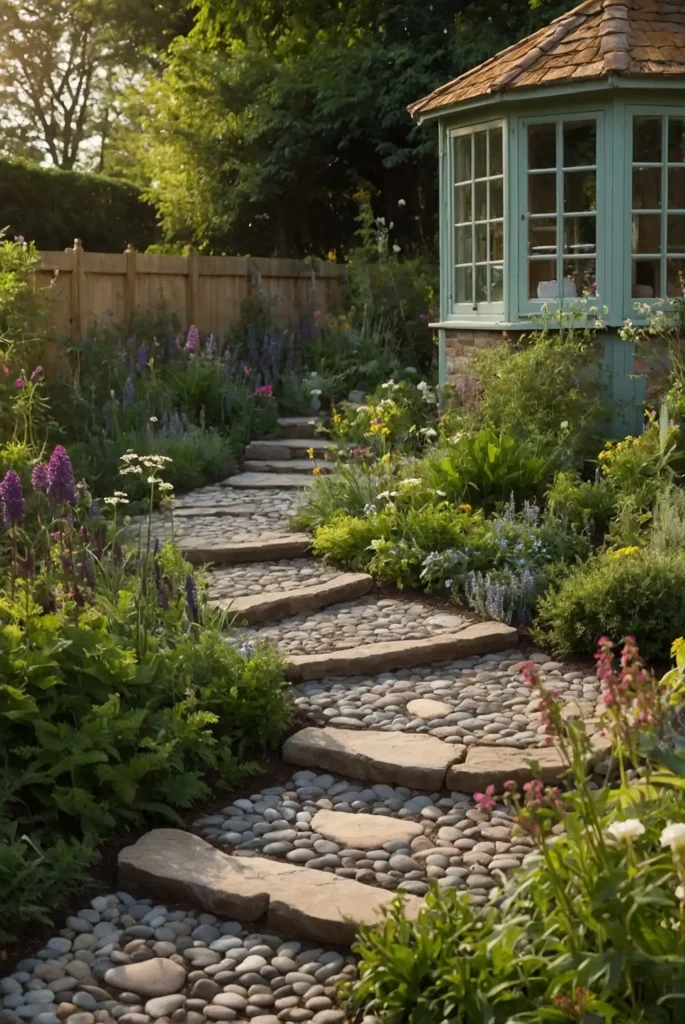
Create whimsical secondary paths using individual stepping stones placed among ground covers or low plants.
These informal routes invite exploration of garden nooks and crannies.
You’ll establish practical access for maintenance while adding playful elements to your garden design.
Consider personalizing with handprints, mosaics, or imprinted leaves for added character.
Allow moss or creeping thyme to grow between and around stones for that established, magical garden feeling.
25: Incorporate a Berry Patch
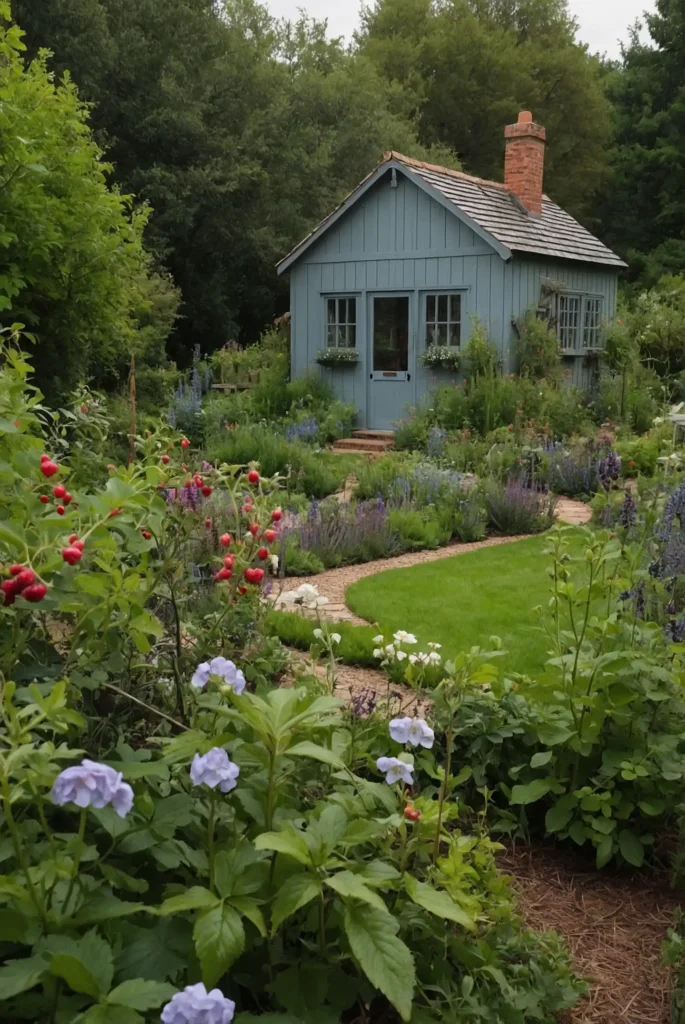
Dedicate a sunny corner to productive small fruits like strawberries, blueberries, and raspberries.
These edible plants contribute both ornamental and practical value to cottage gardens.
You’ll enjoy fresh berries while maintaining authentic cottage garden productivity.
Contain spreading varieties with decorative edging that complements your overall garden style.
Incorporate companion plants like chives, nasturtiums, or marigolds that may help deter pests while enhancing the visual appeal.
26: Create a Morning Coffee Nook
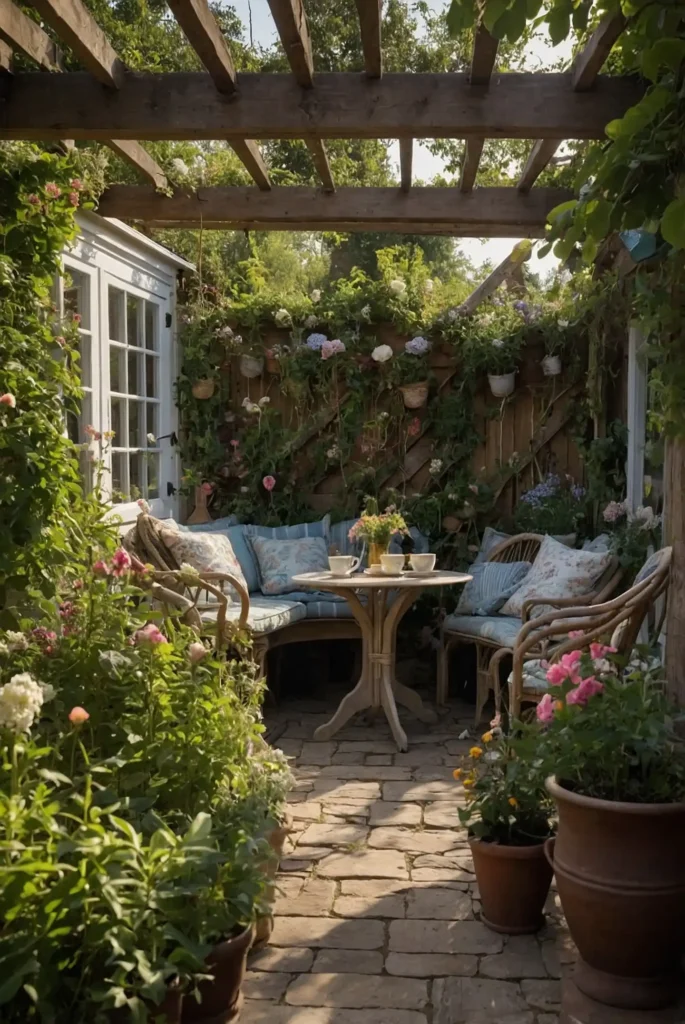
Design a small seating area positioned to catch the morning light where you can begin your day surrounded by garden beauty.
A bistro set or pair of comfortable chairs creates this destination.
You’ll establish a daily garden connection that enhances wellbeing and ensures regular enjoyment of your creation.
Position near especially fragrant morning bloomers like roses or jasmine.
Add a small table for your coffee cup and perhaps a weather-resistant cushion or two for comfort.
27: Include Self-Seeding Flowers
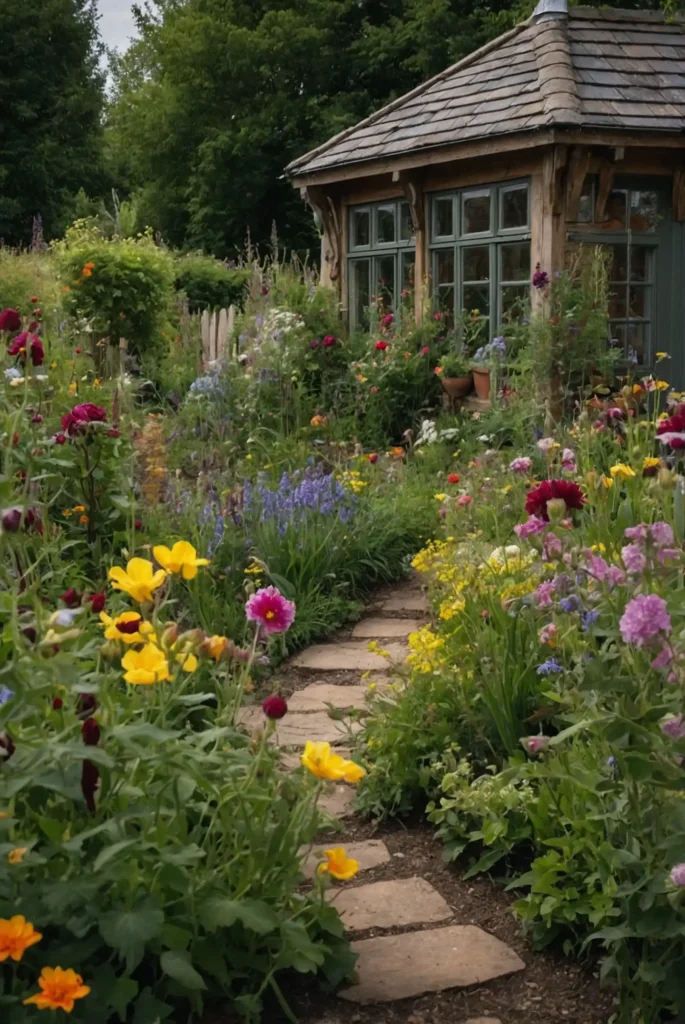
Incorporate reliable self-sowing annuals and biennials like love-in-a-mist, foxgloves, hollyhocks, and forget-me-nots that perpetuate themselves year after year.
These plants create the authentic cottage garden abundance.
You’ll develop that coveted established, evolved garden character as plants place themselves in pleasing combinations.
Learn to recognize seedlings of desirable volunteers so you can edit rather than eliminate them.
Allow these plants moderate freedom while removing excess seedlings to maintain balance within your garden composition.
Conclusion
Your cottage garden will evolve into a personal paradise reflecting both timeless tradition and your unique vision.
Embrace some beautiful imperfection, celebrate seasonal changes, and create a magical outdoor space that brings joy throughout the year.


